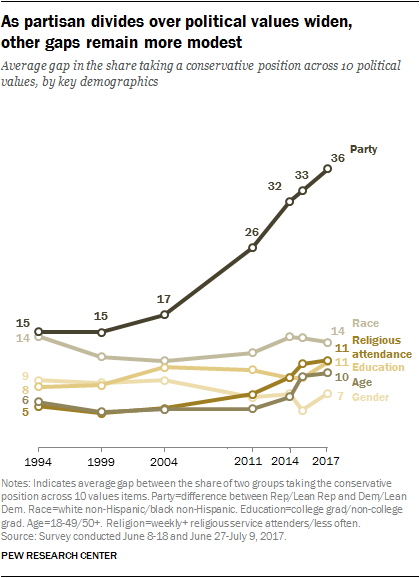The gap between Democrats and Republicans is larger than ever before, as shown by a series of surveys taken regularly since 1994.
The report by the Pew Research Center shows that the gap between both parties’ views has widened across almost every major policy issue over the last 23 years, from their opinions on big government to the place of immigrants in American society.
Overall, the disparity between the parties is now at 36%, which is almost double the 15% gap that existed when the surveys began.
This means that the median views within both parties are farther apart then they ever have been before – 95% of Republicans are more conservative than the median Democrat, and 97% of Democrats are more liberal than the median Republican.
Historically, the more moderate someone's view was, the more likely it was that they were closer to the median political position between both parties. Today, this correlation no longer exists - there are now small peaks on both the consistently conservative and consistently liberal sides of the distribution.

The study notes, however, that while the share of people holding a mix of liberal and conservative views has declined, the share of people holding extreme positions on liberal and conservative issues has not increased.
In addition, despite the increase in polarization, the median view of both parties taken together has begun to skew slightly liberal. This is mainly because big issues like the acceptance of homosexuality and positive views of immigrants have increased among both parties, leading them to become more liberal overall in these categories.
In recent years, social media has been identified as a driver for this widening gap, with Facebook and Twitter users being able to control what sorts of viewpoints and sources appear on their newsfeeds.
But research suggests that those who rely less on the internet and social media are equally likely to become politically polarized. So while the jury is still out on the causes of political tribalism, it is clear that considering opinions that contrast with your own views is key to avoiding the kind of bubble thinking that has led to the development of a wide chasm between the two major parties.

